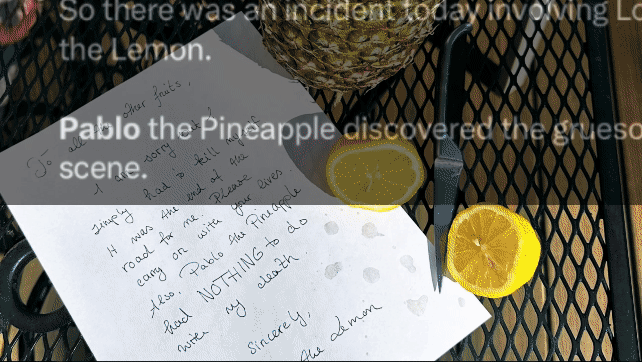This is a story about a tropical plant with an edible fruit, but it's as much about how one can change opinions and shifting narratives to affect the change you seek. Please join me on this pineapple peregrination.
When I bought a pineapple to make a pineapple pizza, I did not expect what happened next. I snapped a photo of the pineapple in my shopping basket and shared it on Twitter (yes, I will call it Twitter throughout this entire article). People were not pleased that the pineapple would be used for pizza and of course, in the usual Twitter fashion, voiced such displeasure in my replies. So, this inspired me to create more pineapple content. Just to annoy the haters.
I named the Pineapple Steve and updated the people of Twitter daily on the ripening process. I humanized the pineapple and worked on getting the people online emotionally attached to it. I even put on a Pineapple dress that I owned and did a self-portrait session. The whole saga took a life of its own.
Of course, people made slanderous connections to polyamory. If you didn’t know already, and swingers have taken on the upside pineapple as a symbol to signal their swingerdom to other swingers to invite them to participate in swinging activities. At first those comments irritated me. I even took the self-portrait photo of me and the pineapple down for a bit. Nevertheless, I persisted. I concluded the first round of the saga by filming the beheading of Steve, a pineapple that people online had gotten attached to.
It was entertaining and hopefully brought some lighthearted fun to people’s lives. It also made me think about the power of symbols in the ongoing culture wars. I fully understand that any symbol can be claimed by any side. I also understand that if you wish to win, you must dominate the narrative. But how do you this?
Before answering this, let’s skip to round two of purchasing a pineapple. This time when I purchased a pineapple a few weeks later I was fully aware that I would name the pineapple and that I would get people online attached to it.
After a poll the pineapple was named Pablo. At first, I thought I would create some fun little scenes with the pineapple that were related to Pablo Picasso, but Twitter had other ideas. They wished to go along the lines of Pablo Escobar, the infamous Columbian Drug Lord. So, I changed direction.
I created playful scenes showcasing the Pineapple extorting money from another fruit in the kitchen, in this case it was Louis the Lemon. I showed a scene with the Lemon paying Pablo the Pineapple money. I showed a scene where Pablo the Pineapple applied a grater to Louis the Lemon. The most dramatic scene involved Pablo the Pineapple next to a cut up lemon while also showcasing a “suicide” note.
As with the first one, I shot a self-portrait session with the pineapple and filmed Pablo's inevitable (and justified) execution.
My pineapple parable captivated and entertained people. Whenever they spotted pineapples in the store or had one at home, they began tagging me. People began associating pineapples to the stories I had created and stopped immediately connecting them to polygamous debauchery.
This, in my opinion, is an example at how to shift association with symbols, even if it is only in a small, localized bubble of people. This is how gradual change is possible. It is about not buying into the narrative’s others have written but to create your own narrative that people can latch onto.
Creating culture is understanding that you wish for your narrative to become the dominant one. It doesn’t have to be in some formal academic sense or even involve mentioning the cultural wars. It is simply about creating fresh entertainment that people enjoy. It need not be serious, dry, boring or academic.
Most importantly it can arise from the most unexpected places . . . like buying a pineapple to add as a topping to pizza.






Makes perfect sense.
Steve would've been so proud! 😉